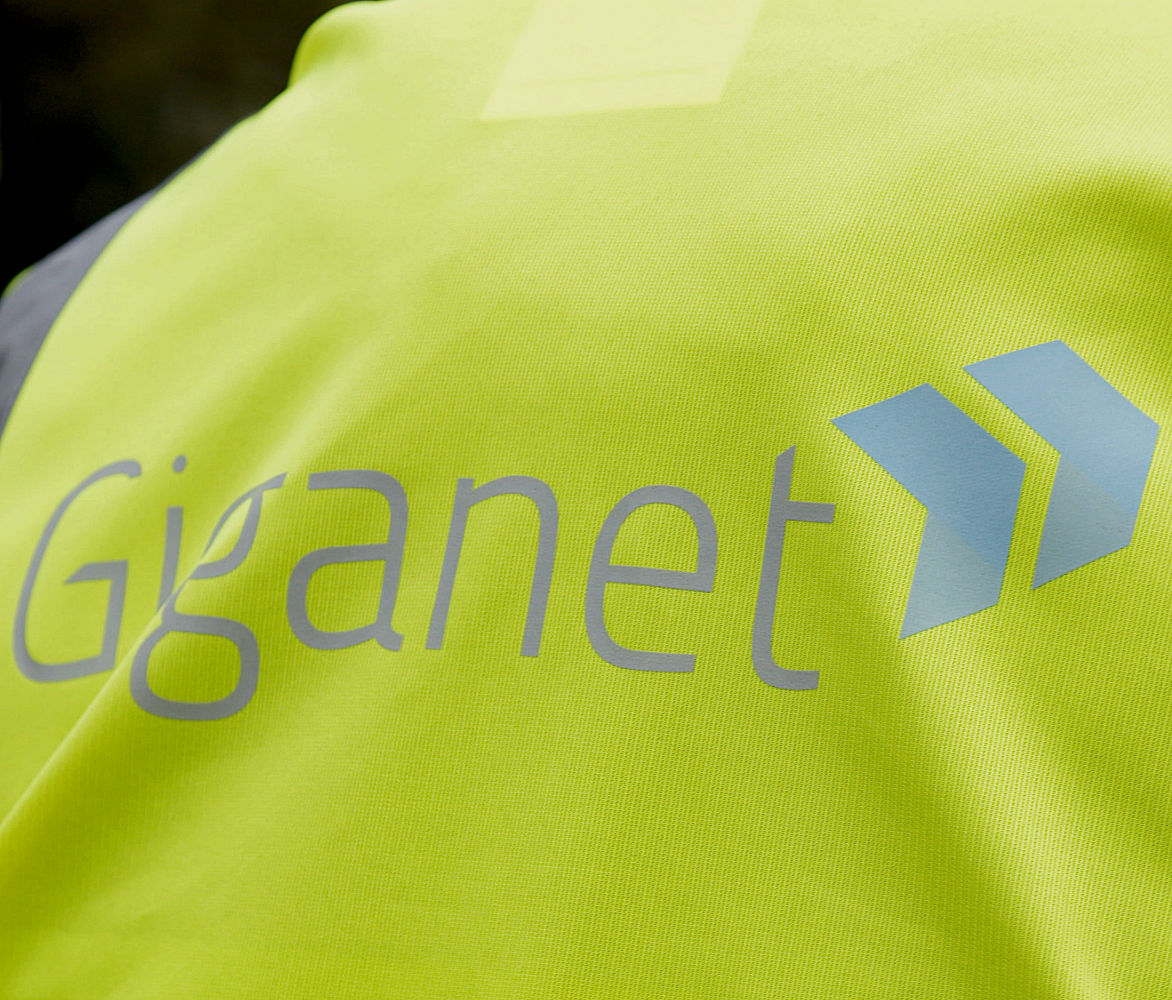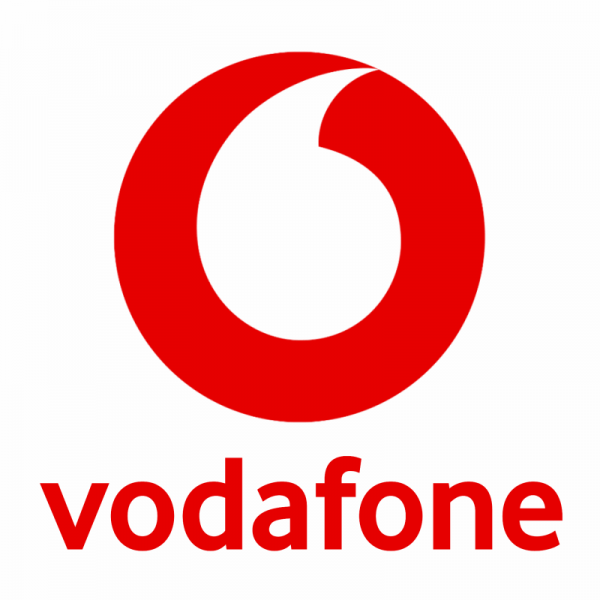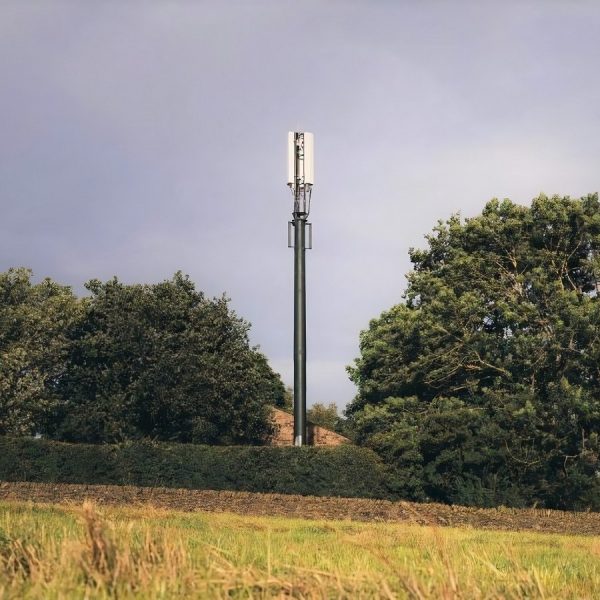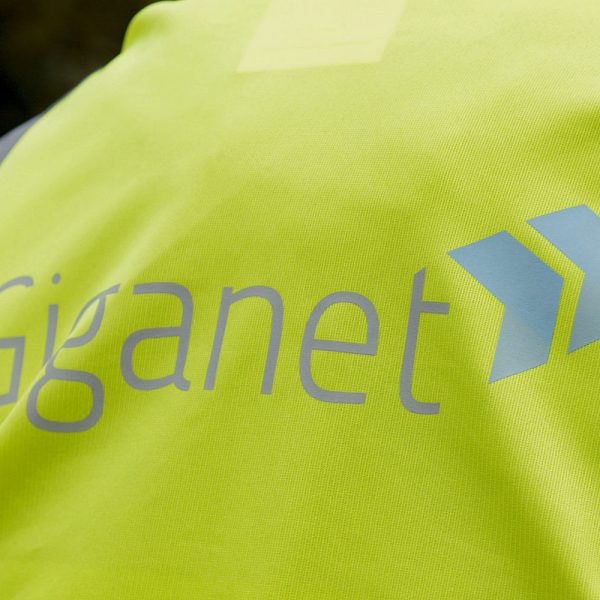A Look at How Other Countries Advertise Broadband ISP Speeds vs UK
USA
The United States is a huge country with a lot of different providers, although Comcast, Charter, AT&T and Verizon tend to be the largest four. Both Comcast and Charter are DOCSIS based Cable networks with a little FTTP/H, while AT&T uses a mix of ADSL, VDSL and FTTP/H technologies and it’s a similar story for Verizon.
Most of the cable and DSL providers stick “up to” in front of their speeds and appeared to promote a peak headline speed on each package, rather than an average or % measure. The exception being Verizon where they just promoted a top headline speed, although the technology being used wasn’t very clear.
Comcast (XFINITY)
Up to 10Mbps – $49.95
Up to 2000Mbps – $149.99
Charter (Spectrum / Time Warner Cable)
Up to 60Mbps – $29.99
AT&T
We had trouble getting package details for this provider, although their DSL speeds were generally promoted as “up to 50Mbps“, while AT&T Fibre offered speeds of “100Mbps” at $80 per month.
Verizon
50/50Mbps – $39.99
500/500Mbps – $194.99
Singapore
Singapore is a unique country in that it’s effectively a single city-state and one where nearly all older Cable and ADSL services were withdrawn permanently in June 2016. Instead almost every property in the country has access to an ultrafast fibre optic (FTTP/H) broadband network and many ISPs offer multi-Gigabit speeds.
Most ISPs advertised either a flat headline rate (i.e. the fastest peak speed for that package) or they put “Up to” in front of the speed. One interesting exception to this rule was M1, which promoted a peak headline rate but then gave customers a “typical speed” report for each package in the small print (this is similar to one of the ASA’s earlier proposals for the UK).
M1’s small print: “Typical download speed for Fibre Broadband 300Mbps, Fibre Broadband 1Gbps, Fibre Broadband GamePRO 1Gbps and 4G Mobile Broadband 300Mbps is 291.3 – 299.6Mbps, 764.4 – 846.4Mbps, 738.7 – 878.9Mbps and 41.7 – 105.1Mbps respectively. The typical speed range refers to the range of download speeds that users can experience 80% of the time.”
Singtel – FTTP/H
500M – $49.90
10Gbps – $189.99
StarHub – Cable
Up to 200Mbps down – Up to 10Mbps upload – $22.90
StarHub Fibre – FTTP/H
Up to 1Gbps down + upload – $39.90
M1 – FTTP/H
300Mbps – $29
1Gbps – $39
My Republic – FTTP/H
Up to 1000Mbps down – Up to 500Mbps upload – $49.99
Germany
The German market is perhaps the one that is most comparable to the UK in its mixed market share of ADSL / VDSL (dominant method of connectivity), Cable and FTTH/P technologies. However technology isn’t the only similarity as the country’s ADSL packages all follow the same sort of top 10% mould as the UK’s old approach by promoting speeds of ‘up to 16Mbps’.
However we see a difference on the VDSL (FTTC) options, which all adopted the ‘Up to’ prefix but then proceeded to promote a peak headline rate for each package.
Deutsche Telekom (T) – ADSL/VDSL
Up to 16Mbps down – up to 2.4Mbps upload – €34.95
Up to 50Mbps down – up to 10Mbps upload – €39.95
Up to 100Mbps down – up to 40Mbps upload – €44.95
1&1 Internet – ADSL/VDSL
Up to 16Mbps down – up to 1Mbps upload – €24.99
Up to 50Mbps down – up to 10Mbps upload – €29.99
Up to 100Mbps down – up to 20Mbps upload – €34.99
Unitymedia – Cable
Up to 10Mbps down – 1Mbps upload – €19.99
Up to 60Mbps down – 3Mbps upload – €24.99
Up to 120Mbps down – 6Mbps upload – €29.99
Italy
As stated earlier, Italy is almost entirely ADSL / VDSL based but they do have a growing FTTP/H market. Once again the pure fibre optic packages all promoted peak headline speeds with an “up to” prefix, while we noted that one ISP promoted ADSL performance as “up to” 7Mbps and another listed it at the more theoretical level of “up to” 20Mbps (we couldn’t figure out why these ISPs promoted such different ADSL speeds).
Fastweb – ADSL/FTTH
up to 200Mbps – €39
Tiscali – ADSL/FTTH
up to 20 Meg – €19.95
up to 1 Gig – €34.95
Telecom Italia – ADSL/FTTH
Up to 7 meg – €39.90
Up to 1000 meg down – up to 100 Meg upload – €39.90 (pricing was hard to discern)
Sweden
Only around 30% of Swedish consumers take slower ADSL or VDSL (FTTC) based broadband services, while 20% prefer Cable (DOCSIS) networks and the other half are catered for by pure fibre optic (FTTH/P) services. Interestingly the hybrid fibre Cable DOCSIS networks in Sweden are almost as fast as rival FTTH/P providers, which is perhaps an indication of how Virgin Media may evolve in the UK.
However it’s interesting to note that all of the major providers appear to advertise their service speeds by adopting a ranged approach and in some cases, particularly on the fastest fibre packages (e.g. 500-1000Mbps), those ranges can be extremely wide. We somewhat prefer this way of doing things, although it’s unclear how the ISPs decide where to place the minimum performance level for each package.
Comhem – Cable
Receive files 500-1000Mbps – Send files 50-100Mbps – 899 kr per month
Receive files 30-50Mbps – Send files 7-10Mbps – 349 kr per month
Telia – FTTH / ADSL / VDSL
Downstream: 12-30Mbps – Upstream: Up to 12 Mbps – 439 kr per month
Downstream: 500-1000Mbps – Upstream: 500-1000Mbps – 999 kr per month
Bredbandsbolaget – FTTH / ADSL / VDSL
Download speed 60-100Mbps – Elevated upload speed to 60-100Mbps – 369 kr per month
Download speed 500-1000Mbps – Elevated upload speed to 60-100Mbps – 599 kr per month
Poland
Around 35% of lines in Poland use DSL (ADSL/VDSL) services and a similar proportion connect via Cable (DOCSIS) networks, while the rest reflect an interesting mix of FTTH/P and fixed wireless network types. In terms of advertising, most of the ISPs we checked put “up to” in front of their packages and then proceeded to promote a peak headline speed. The exception was Orange, which chose not to add “up to” on their FTTH service.
UPC – Cable
Up to 250Mbps down / up to 20Mbps upload – 69zt per month
Up to 60Mbps down / up to 6Mbps upload – 49zt per month
Orange Poland – VDSL / FTTH
Download 300Mbps / Upload 30Mbps – 79zt per month
Download up to 80Mbps / Upload up to 8Mbps – 39.90zt per month
Netia – FTTH
Up to 100Mbps – 49.90zt per month
Up to 900Mbps – 79.90zt per month
Brazil
Most of this country’s connections still appear to be dominated by older ADSL / VDSL services and Cable networks, with a few FTTH dotted around. Broadband packages also came advertised in a variety of ways, with some ISPs only promoting a flat headline speed and others putting “up to” in front. However the diversity of service provision made it difficult to establish if providers were taking a specific approach to advertising or merely doing their own thing (we suspect the latter).
NET Virtua – FTTH
2MB down – 500Kbps upload – R$39.90
240MB down – 20Mbps upload – R$199.90
Vivo – ADSL / Cable / FTTH
300Mbps down – 150Mbps upload – R$199.99
50Mbps down – up to 25Mbps upload – R$89.99
Oi – ADSL / VDSL
Up to 15Mbps down – up to 1Mbps upload – R$49.90
Up to 35Mbps down – up to 3Mbps upload – R$84.90
Spain
Like most EU countries Spain is a patchwork of different technologies. Overall around 50% of lines use ADSL / VDSL technology, while 20% take a Cable (DOCSIS) service and 30% have migrated to a new generation of ultrafast FTTH/P connections. Spain is often used as an example by Ofcom when showing the rapid rise of fibre optic lines and they want to see something similar in the UK.
The only ADSL package we came across was sold by Vodafone and oddly this was presented as an “up to 30Mbps” connection, which is faster than ADSL2+ technology can go and so we assume that they were actually using VDSL. Otherwise all of the other packages were either Cable or FTTH based and all promoted a top headline speed without any use of an “up to” prefix.
On top of that neither Movistar nor Jazztel seemed to be especially clear about the upload performance of their packages.
Vodafone – ADSL / VDSL / FTTH
Up to 30Mbps – €37.50 per month
300Mbps down – 300Mbps up – €46.05 per month
Ono – Cable
50Mbps down – 5Mbps upload – €33.05 per month
300Mbps down – 30Mbps upload – €43.85 per month
Movistar – FTTH
50Mbps – €38 per month
300Mbps – €43 per month
Jazztel – ADSL / FTTH
20Mbps – €19.30 per month
300Mbps – €36.24 per month
Conclusions
So far as we could tell only Germany and one ISP in Brazil seemed to have a similar 10% advertising rule to that of the United Kingdom’s old approach and they only applied it on ADSL packages, while almost every other provider stuck to the original approach of displaying a peak headline speed capability (sometimes prefixed with “up to” and sometimes not). However Sweden did opt for a range approach (e.g. 500-1000Mbps).
We also noted that most countries appear happy to promote their upload speeds alongside the primary download rate, although there were a few exceptions at specific ISPs (some of this could be due to the packages being symmetrical, which wasn’t always made clear). By comparison BT, TalkTalk, Vodafone, Sky Broadband and Virgin Media in the UK all fail to display their upload speeds, unless you start the sign-up process.
At this point some readers might suggest that FTTH/P providers which only promote a peak headline speed are fine to do so because they can actually deliver such performance, except this isn’t always the case. Put another way, FTTH/P might remove the cable itself from being an obstacle to performance but the ISP can still fail to provide enough capacity to fuel their service.
For example, a few years ago I took a visit to Uppsala in Sweden and had the pleasure of being able to connect via a friend’s supposedly 1Gbps FTTH line. However to my surprise this line struggled to deliver anything much above 20Mbps (although at times it did “jump” to 80-90Mbps) and all of that was due to congestion in the local network. Suffice to say that a lot of FTTH providers may be promoting speeds that they can’t always deliver.
Mark is a professional technology writer, IT consultant and computer engineer from Dorset (England), he also founded ISPreview in 1999 and enjoys analysing the latest telecoms and broadband developments. Find me on X (Twitter), Mastodon, Facebook and Linkedin.
« Airband Deploys First Wireless Rural Broadband Mast in Shropshire UK
Latest UK ISP News
- FTTP (5515)
- BT (3514)
- Politics (2537)
- Openreach (2297)
- Business (2262)
- Building Digital UK (2244)
- FTTC (2043)
- Mobile Broadband (1973)
- Statistics (1788)
- 4G (1664)
- Virgin Media (1619)
- Ofcom Regulation (1461)
- Fibre Optic (1395)
- Wireless Internet (1389)
- FTTH (1381)
























































for me its not the fact they give speeds that not everyone can get its more they sell it as a product its not. if i was in charge id put as much emphasis on the type of tec used so instead of calling just about everything “fibre” (i believe someone once made a argument that even asdl2+ and asdlmax where fibre products by ofcoms own rules as they also use fibre backhauls) they would have to say what type of tec was used to supply the stated speeds as well.
Still a very interesting article, especially after you convert some of the prices and compare to what we would pay in the uk.
sorry i ment ASA not ofcom.
Any chance of a edit button??
An analogue phone line could be considered fibre by ASA standards as it gets digitised and sent along the fibre trunks just as data does.
I agree as edit button need to bring in.
10Gbps fir $190 per month in Singapore is astonishing, I wonder what the countries uplink to the rest of the world is like. Prob will get 10Gbps for local in country content but not for stuff pulled in from abroad due to contention at the exchanges.
OFCOM’s new proposal to measure speeds as an average looks to be too early, it would deal with ISP’s like VM who have over subscribed but won’t deal with slower access technology running at its peak per line and skews the meaning of the average.
You can check at least some of the ISPs and see the performance they advertise outside of Singapore.
It’s astonishing, yes, however we too could have that if we all moved into apartment buildings, the government paid up and Ofcom and the government abandoned infrastructure competition.
As it is not happening. Wouldn’t want to rob Sky and TalkTalk of the MPF copper 🙂
Just to add to CarlT’s excellent list
1. Singapore has no EU to meddle in a sovereign government decisions.
2. Singapore does not have an NHS to spend government money on. In short unless you are destitute if you get ill then you and your extended family are expected to pay either direct or via your private/company medical insurance.
The gypos could if we let them 🙂
The article says: “The exception being Verizon where they just promoted a top headline speed, although the technology being used wasn’t very clear.”
The Verizon 50/50Mbps and 500/500Mbps packages are based on full fibre!
Mark, you should also make the point that since the ASA recently announced they are happy for broadband delivered over copper wires to be called “fibre broadband”, the UK does not have alevel playinng field on which the pure fibre providers like B4RN, Gigaclear, City Fibre and Hyperoptic to compete with copper broadband providers like BT, Sky and Virgin because the majority of those receivinig copper delivered broadband from these companies actually think their copper wires have magically changed to fibre (See Cable.co.uk). The government like these lies to be told to consumers because they can then boast of the success (sic) of the BDUK programme. You should also make the point that in 2015, France’s equivalent of the ASA made it illegal not to tell the customer on what medium broadband enters the property. The UK ASA however continues to be happy for the public to be lied to.
The article was looking at how speeds are advertised, not so much the technology that underpins them. The only thing I could say, based on the examples I found, was that generally most ISPs distinguished their packages purely by speed, with only a few mentioning the speed and specific technology (e.g. VDSL or FTTH) in their marketing.
We’ve covered the fibre debate before, most recently below, so I didn’t feel a need to retread that ground for this one.
https://www.ispreview.co.uk/index.php/2017/06/full-fibre-isps-call-asa-stop-misleading-uk-fibre-broadband-adverts.html
https://www.ispreview.co.uk/index.php/2017/11/asa-rules-uk-fibre-broadband-isp-adverts-part-fibre-not-mislead.html
Mark, The reason it’s important to reference the ASA decision to permit misleading advertising is because speed is not the anly factor people consider when buying broadband – and rightly so. In the same way that speed is not the only factor people look at when buying a car. Equally people know that some manufacturers eg Mercedes and BMW have a reputation for quality and they also know that “fibre” is the best kind of broadband available. Allowing copper delivered broadband to be described as fibre distorts the market by convincing people they already have fibre when they only have copper (even though fibre may go as far as the exchange). This is like building the M4 to London to Bristol but only taking the 6 lane motorway as far as Swindon and then calling the two lane A roads that take traffic to Bristol, the M4, when there is no way those roads can take the traffic volumes that the M4 handles. The ASA is incompetent in continueing this public deception which should be highlighted at every opportunity. The UK alerady has the fewest FTTH connections in the whole of Europe and lying to customers as the ASA now approves will prevent consumers from buying something they think they already have and may also mean the demise of the few pure fibre broadband companies trying to correct this nonsensical situation.
@GL – it’s clear that your dislike of BT is because they would not provide superfast in your area and that affects your writing.
What actually matters to most normal people is the connection speed at the router, not what it comes over.
You seem to want to drop the word ‘fibre’ with FTTC in the hope that fewer people will buy it which is very strange.
Where are the pure fibre companies overbuilding FTTC? So you predict the demise of Gigaclear, Truespeed, Cityfibre, Hyperoptic, INFL etc.
Is GPON pure fibre?
Is G-PON pure fibre – Yes it is.
Is GPON contended is the question you may be asking….yes it is.
Is GPON contended like FTTC; NO
Is GPON more reliable than FTTC – yes and can it be upgraded to well beyond what FTTC is capable of? yes again.
Is present GPON being developed – yes it is WDM PON which is a true PtP connection and uncontended apart from what you pay for data wise.